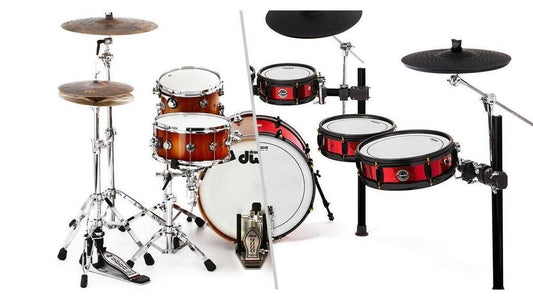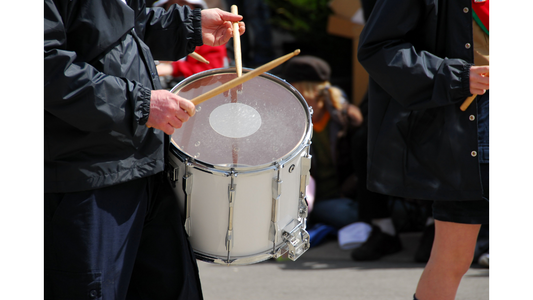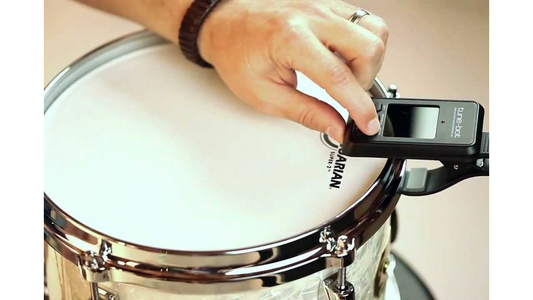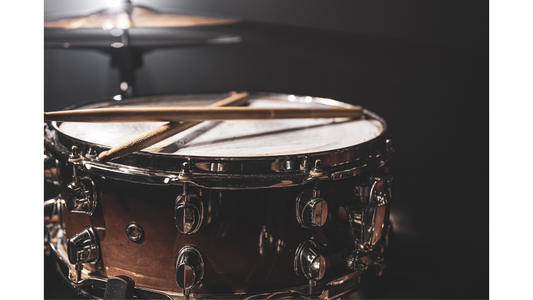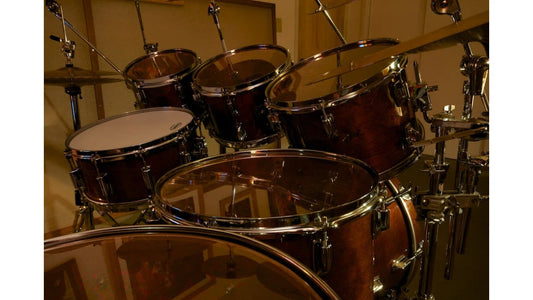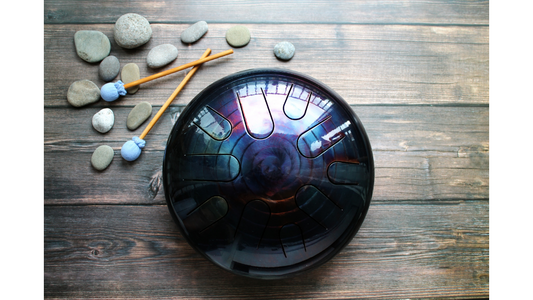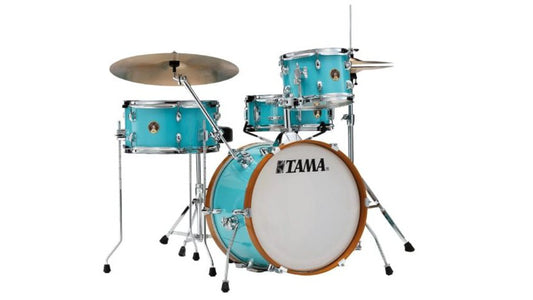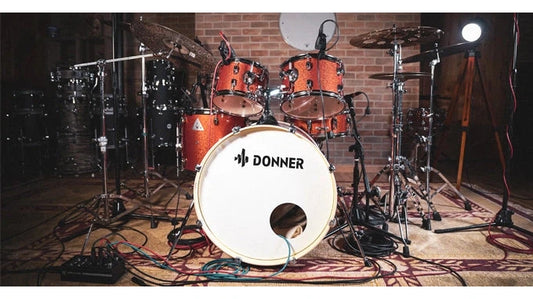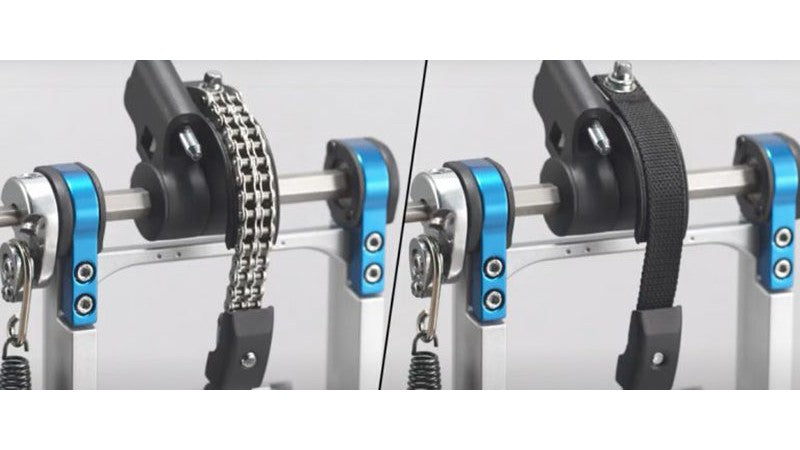
Bộ Trống Hiện Đại Phần 4: Pedal Trống
Trong các phần trước của loạt bài viết về cấu tạo của bộ trống hiện đại, chúng ta đã tìm hiểu về bass và pedal. Bây giờ, chúng ta hãy cùng tìm hiểu bàn đạp trống bass và hi-hat, cả hai đều là những bộ phận thiết yếu của mọi bộ trống và thường là những bộ phận bị phải chịu áp lực nhiều do chúng ta dẫm và đạp chúng hàng ngày
Việc phát minh ra bàn đạp trống trầm vào đầu những năm 1900 đã tạo ra một cuộc cách mạng về trống vì đây là lần đầu tiên một tay trống có thể chơi bass, trống snare và cymbal cùng một lúc.
Bàn đạp sử dụng dây kim loại cho kết nối này được gọi là truyền động trực tiếp, trong khi những bàn đạp sử dụng dây curoa hoặc dây đeo được gọi là truyền động bằng dây curoa. Hệ truyền động bằng xích được phát triển vào cuối những năm 1970, lấy thiết kế của các bánh răng và xích từ xe đạp.
Đường nối truyền động trực tiếp như liên kết trên Yamaha FP-9500D đảm bảo kết nối chắc chắn, không bị uốn cong và ổn định trong suốt chuyển động của bàn đạp. Đường nối thường được làm bằng kim loại, mặc dù một số nhà sản xuất cung cấp các mô hình sử dụng nhựa thay thế. Truyền động trực tiếp “đẩy” bàn đạp trở lại khi bật lên, giúp bàn đạp phản hồi nhanh với sức mạnh và tăng khả năng kiểm soát. Vì lý do này, bàn đạp truyền động trực tiếp thường được ưa thích bởi những tay trống đạp bằng gót và muốn có tốc độ, độ chính xác cao trong kỹ thuật chơi của họ.
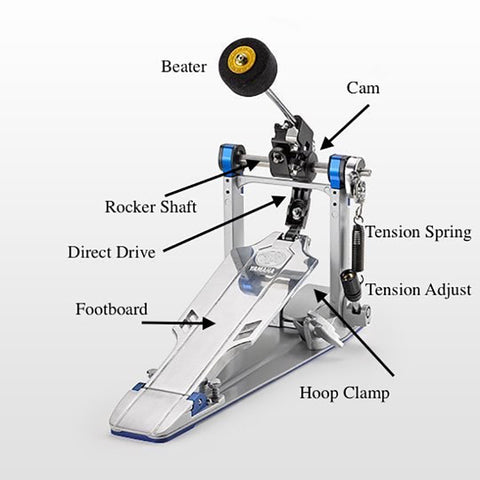
Bàn đạp chân truyền động dây curoa đầu tiên sử dụng dây da, nhưng các phiên bản hiện đại như Yamaha FP-8500B sử dụng dây curoa nylon dệt cho tuổi thọ cao. Truyền động bằng dây curoa giúp giảm ma sát và mang lại cảm giác nhanh chóng, nhẹ nhàng. Với thiết kế này, bàn đạp không cần sử dụng đến chất bôi trơn, và trong một số trường hợp, có thể êm hơn truyền động trực tiếp hoặc xích.
Khả năng điều chỉnh là rất quan trọng khi đề cập đến bàn đạp bass và khi chọn một bàn đạp, bạn sẽ muốn đảm bảo rằng bạn có thể đạp nó sự thoải mái và đạt hiệu suất tối đa.
Mỗi bàn đạp chân hiện đại đều có độ căng lò xo có thể điều chỉnh, nhưng không phải tất cả chúng đều được tạo ra như nhau. Hãy tìm lực căng lò xo dễ điều chỉnh như trên Yamaha FP-8500B hoặc điều chỉnh lò xo tự động cập (Đang chờ cấp bằng sáng chế) được sử dụng trên bàn đạp FP9 Series.
Kích thước và loại vật liệu được sử dụng trong beater không chỉ ảnh hưởng đến âm thanh của trống bass mà còn ảnh hưởng đến cảm giác của người chơi. Nói chung, bề mặt của beater càng lớn và cứng thì lực tác động càng lớn. Nỉ là vật liệu được sử dụng phổ biến nhất, mang lại độ sắc nét phong phú và âm thanh lớn mà không gây “cấn”. Một số beater khác, như Yamaha BT950 và những chiếc trên dòng sản phẩm 9500 Series của công ty, có đầu có thể đảo ngược, với một bên là nỉ và một bên là bề mặt nhựa cứng. Bàn đạp Yamaha FP9 Series, đi kèm với bộ đánh phớt BT9, thậm chí còn cung cấp trọng lượng có thể điều chỉnh - thứ ảnh hưởng đến cả action và khả năng phản hồi.
Beater càng gần đầu trống trầm, thì càng có thể chạm tới đầu nhanh hơn, nhưng âm lượng và công suất sẽ bị giảm. Đó là lý do tại sao nhiều tay trống chơi nhẹ nhàng thích đặt góc đánh khoảng 60 độ so với đầu. Những tay trống chơi khó hơn có thể thích một góc 45 độ để tăng âm lượng. Tất cả các bàn đạp trống bass của Yamaha đều cung cấp góc đánh nhịp có thể điều chỉnh được.
Nhiều bàn đạp trống bass ví dụ các mẫu Yamaha FP9, 9500 và 8500 Series - cũng cho phép điều chỉnh riêng cho góc để chân. Những người chơi trống chơi bằng gót chân có thể muốn góc bàn chân cao hơn.
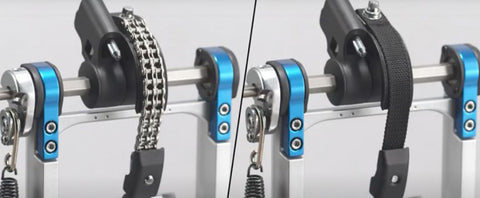
Hi-hat (là một set bao gồm hai cymbal được chơi bằng cách dẫm pedal để hai cymbal đập vào nhau tất cả đều được gắn trên một giá đỡ bằng kim loại), xuất hiện vào cuối những năm 1920, phát triển từ các thiết bị được gọi là “snowshoe” và “sock cymbal”. Vì quá gần sàn nhà nên không thể chơi cymbal bằng dùi trống, nhưng ở một thời điểm lịch sử nào đó, nó đã được nâng lên đến độ cao có thể chơi bằng gậy, do đó có tên là “hi-hat”. Người ta thường đồng ý rằng tay trống jazz Papa Jo Jones (trụ cột của Dàn nhạc Bá tước Basie trong nhiều năm) đã đi tiên phong trong việc chơi các nhịp điệu giờ hiện hành trên hi-hat. Các lựa chọn về hi-hat bao gồm các mẫu nhẹ như Yamaha HHS3 đến Yamaha HS-1200 hạng nặng. Kết nối giữa bảng để chân và cần kéo có thể là "kéo trực tiếp", như được sử dụng trên Yamaha HS-850, hoặc "kéo xích", được sử dụng bởi Yamaha HS-740A. Kéo trực tiếp mang lại cảm giác mạnh mẽ, đồng đều trong suốt hành trình, trong khi kéo xích tạo ra action nhẹ nhàng hơn. Chuyển đổi liên kết truyền động, đặc trưng trên Yamaha HS-1200T, nhẹ hơn ở đầu hành trình và dần trở nên mạnh mẽ hơn khi bàn đạp được hạ xuống, tạo ra cảm giác rõ ràng hơn.
Các tính năng cần lưu ý khi chọn hi-hat bao gồm chân xoay để dễ dàng đặt nhiều bàn đạp (có ở Yamaha HS-1200D), độ căng lò xo có thể điều chỉnh, chiều cao bàn đạp có thể thay đổi và khóa ly hợp . Chân thanh giằng đôi có tác dụng khi chơi nặng, nhưng chân thanh giằng đơn lại tiết kiệm không gian hơn so với những loại khác.
